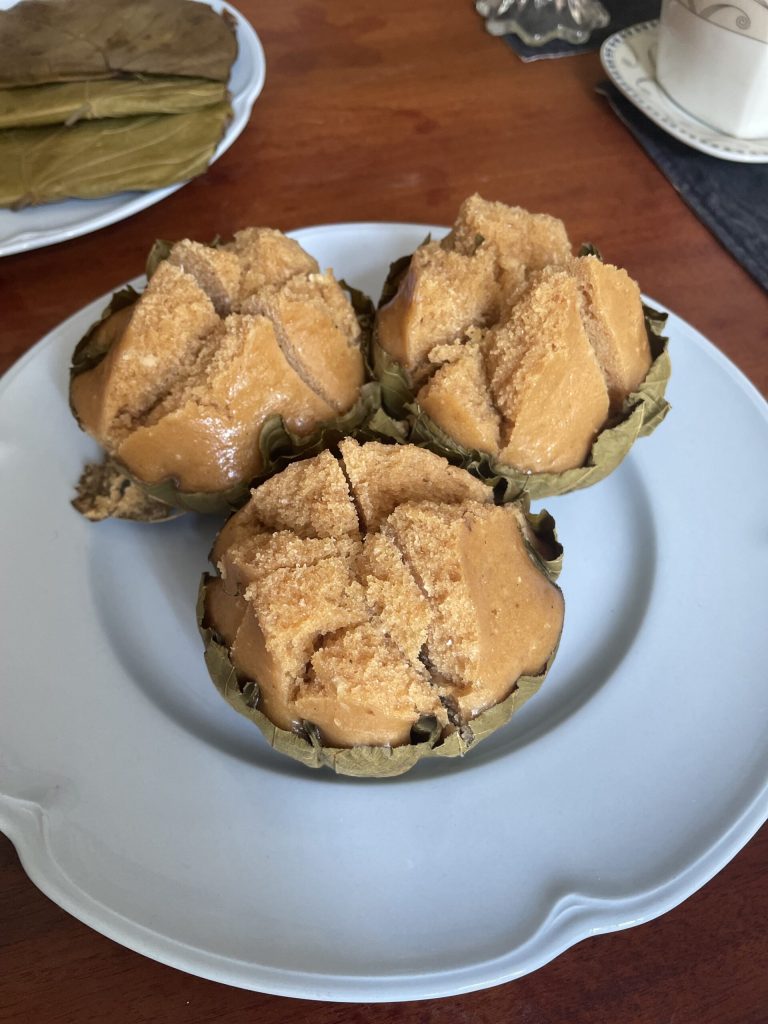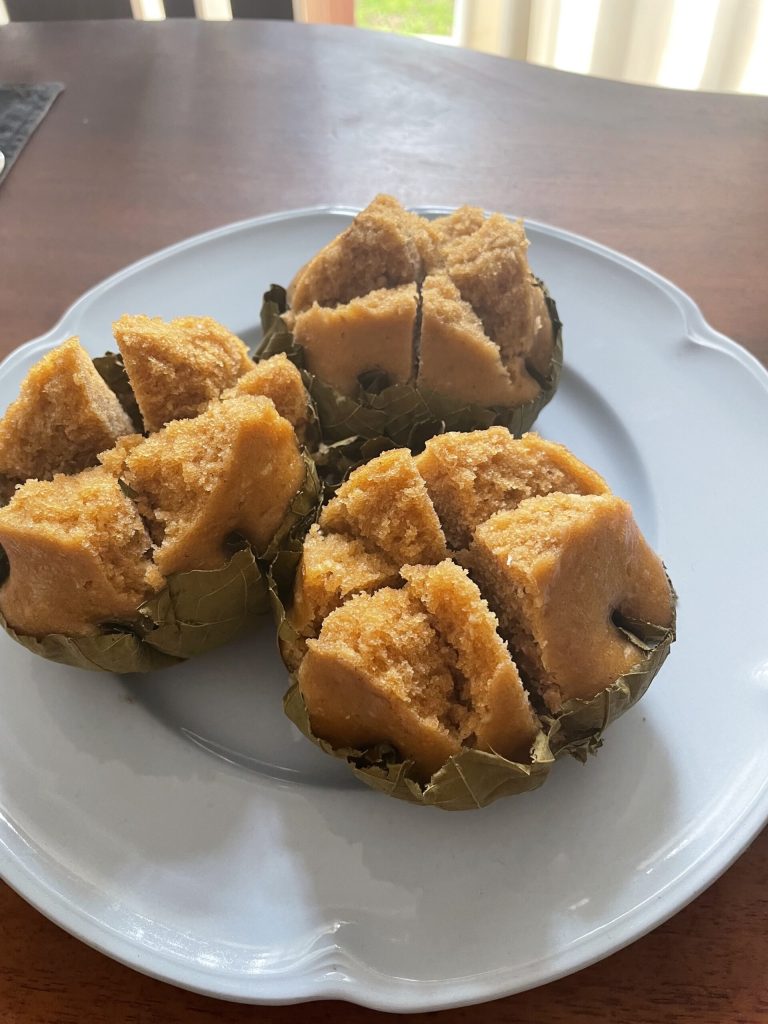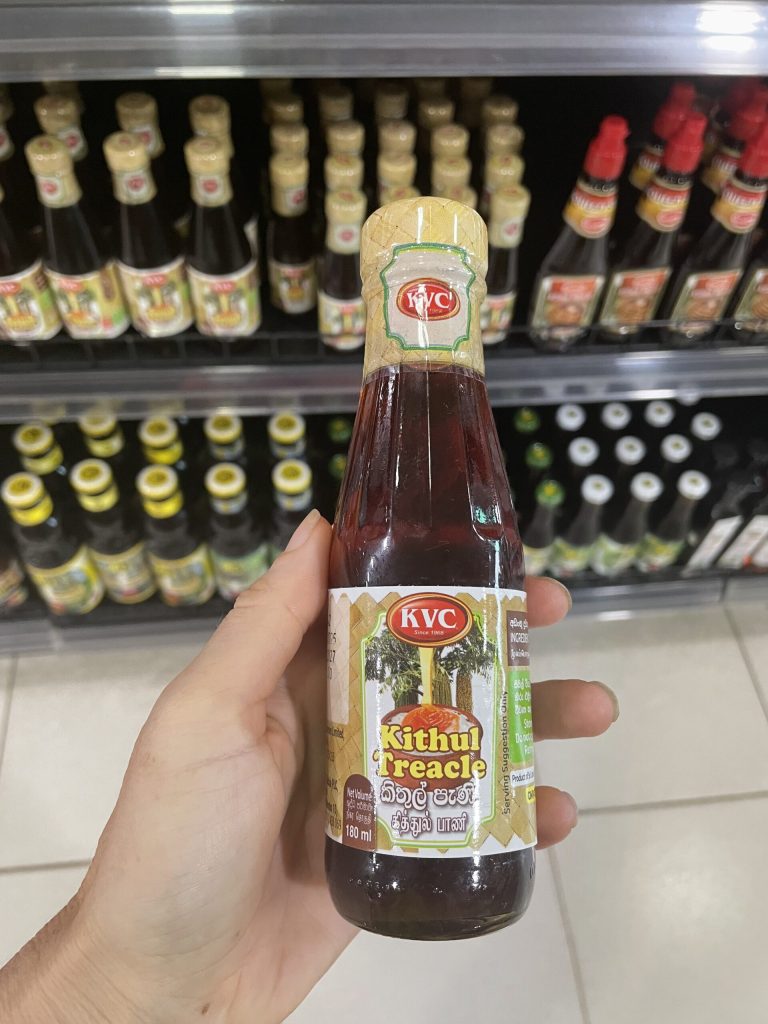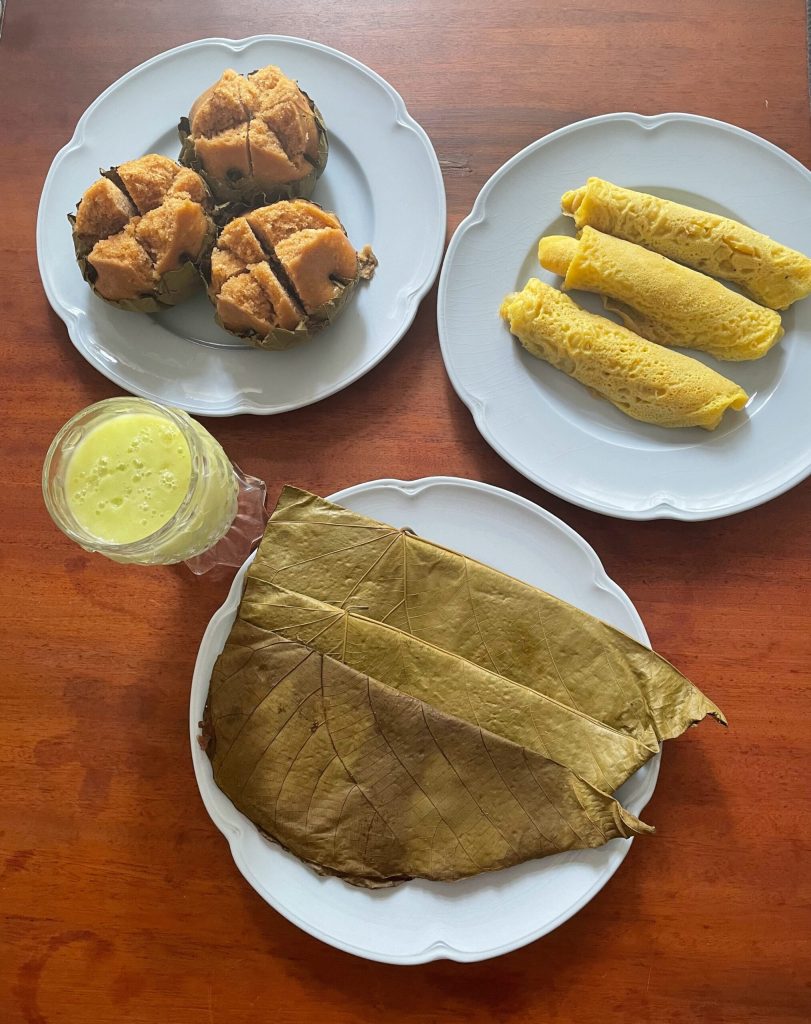The Wandu Appa (වන්ඩු ආප්ප) is a traditional Sri Lankan sweet, associated with home cooking and special moments, especially in the South of the island and rural areas.
The word “Appa” (or “Aappa”) in Sinhala refers to flour and coconut-based sweets, often steamed or pan-cooked (like hoppers, also called Appa) inside leaves, such as banana or kenda leaves, which give them aroma and moisture.
It is very similar to traditional Southeast Asian sweets, like the bibingka from the Philippines, and from South India, where ingredients like rice flour, jaggery (raw sugar), and coconut are common.
Being steamed, it is considered healthier and more “ayurvedic” compared to other fried sweets.
Some modern versions include the addition of yeast or soaked bread to make it fluffier, but the more traditional version is very simple: rice flour, coconut milk, and jaggery for a naturally gluten-free and lactose-free sweet.
In the photo, the one from breakfast at Villa Nivartana during my stay in Bentota in October 2025 like these:

- Difficulty: Easy
- Cost: Cheap
- Rest time: 2 Hours
- Preparation time: 10 Minutes
- Portions: 6 Pieces
- Cooking methods: Steaming
- Cuisine: Sinhalese
- Seasonality: All Seasons
Ingredients
- 1 1/4 cups rice flour
- 3/4 cup coconut milk
- 3 1/2 oz jaggery
Tools
- 1 Steamer
- 6 Muffin Molds
Steps
Dissolve the jaggery in a small pot, add the jaggery with 3 tablespoons of water and heat gently until completely dissolved. Strain if necessary to remove impurities.
Mix the dry ingredients: in a large bowl, combine rice flour and a pinch of salt.
Add the liquids: pour the coconut milk and warm jaggery syrup into the flour, mixing carefully to obtain a smooth and rather thick batter, without lumps.
Let it rest: cover the bowl and let the batter rest at room temperature for at least 2 hours (although without yeast it won’t ferment much, this helps the texture).
Steam cook: pour the batter into small greased molds (preferably in natural leaves, like banana or kenda), and steam for 15–20 minutes, until the surface is dry and the interior is soft but cooked.
Let it cool slightly before serving. Excellent warm or at room temperature.Note: In the version with yeast: ½ teaspoon of baking soda


FAQ (Questions and Answers)
Are jaggery syrup and kithul syrup the same?
No, jaggery syrup and kithul syrup are not the same, even though both are traditional sweeteners used in Sri Lanka.
Here is the difference:
Jaggery: it is a raw sugar obtained from reducing the sap of sugarcane or coconut palm. In liquid form, it is called jaggery syrup or pani. It has an intense, caramel-like flavor.
Kithul syrup (kithul treacle): it is a pure syrup obtained from the sap of the Caryota urens palm (kithul palm). It is more fluid, aromatic, less sweet, and considered more premium and healthy in Sri Lanka.
In summary: they are similar in use (natural sweeteners), but different in origin, flavor, and consistency. In many traditional recipes, both are used depending on availability.
Does the wandu appa resemble Filipino bibingka?
Sri Lankan Wandu Appa and Filipino Bibingka are similar in appearance and cooking, but they are two different desserts in terms of ingredients and cultural context.
Similarities:
Both are traditional sweets either steamed or baked.
They are prepared in natural leaves (banana leaves, kenda, etc.).
They have a spongy and cracked appearance on the surface.
They are festive or breakfast desserts.
Main differences:
Sweetener: Jaggery (palm sugar) in Sri Lanka and white or brown sugar in the Philippines, where butter is also used and bibingka is baked.What are the current relations between the people of Sri Lanka and India?
While there is cultural admiration towards India, some Sri Lankans harbor concerns that India might exert too much economic or political influence over the island, especially if linked to excessive “dependence” on trade or infrastructure.
In certain neighborhoods or regions, the perception is that the local identity should be preserved and not “absorbed” by Indian models.
India is one of the main countries from which tourists come to Sri Lanka. There are continuous flows of travel for pilgrimage, tourism, and work.
Many Sri Lankan students choose to study in Indian universities, thanks to scholarships and exchange programs.What is a typical breakfast like in Sri Lanka:
The traditional breakfast in Sri Lanka is very rich, savory, and varied. Here are some dishes commonly found:
🌶 Savory
String hoppers (Idiyappam): thin steamed rice noodles, served with coconut curry or dhal.
Hoppers (Appa): fermented crepes made from rice flour and coconut milk, sometimes with an egg (biththara appa).
Pol roti: coconut flatbreads served with spicy chutneys or sambol (especially lunu miris or pol sambol).
Parippu (Dhal curry): spiced lentils, served with rice or roti.
Milk rice (kiribath): rice cooked with coconut milk, served with sambol or jaggery.
🍬 Sweet
Halapa, made with millet flour
Wandu Appa (spongy pancakes with kithul syrup)
Sometimes fresh tropical fruit, like banana, papaya, or jackfruit.
🫖 Common beverages
Ceylon black tea with or without milk
Fresh coconut water
Sometimes rice milk or local ayurvedic herbal teas
Breakfast in Sri Lanka is often abundant and complete, and can include both sweet and savory in the same meal. It is an important moment of the day and reflects the richness of the island’s culinary traditions.
This is one of those consumed in Bentota with: Halapa, Pani Pol, and Wuandu Appa.

